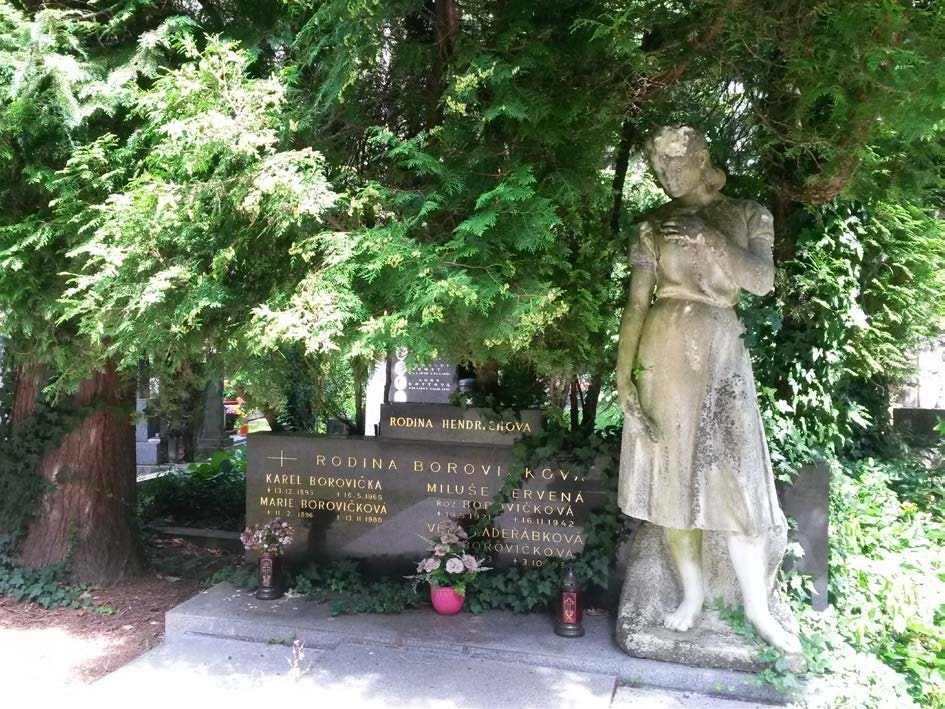Stonemasonry in the Říčany Region – Aldašín, Part 1

East of Jevany in the middle of the woods there used to be a village, originally a pastoral settlement Aldašín. There are two hypotheses explaining the name of the village. The first says that the village got its name after its founder Udaš (Udajsi), the second speculates that the name is a compound of two German words Wald (wood) and Asche (ash) – according to the flat graves found in the old settlement. In 1729 a new church was built in the village in the place of the old one. It was dedicated to St. Jiří and financed by the owner of the estate Kostelec nad Černými lesy Maria Theresia of Liechtenstein.
Geologists and stone lovers will admire the local cemetery, undoubtedly one of the most picturesque in the Czech Republic – if we can say that about a cemetery. Although this is a granite region, the gravestones are made of various types of rocks. Old sandstone gravestones from the 19th and 20th century can be found close to the church building. The sandstone is either fine-grained and beige, or arkose reddish permocarbon, probably from the vicinity of Český Brod. Sandstones were easily shaped into works of art so popular at that time. A roughly shaped medium-grained light granite (an amphibole of a biotite granodiorite?) tombstone adorns the simple grave of the Prague Bishop Jan Lebeda (1913–1991).

Photo B. Dudíková Schulmannová, 2016.
The Aldašín cemetery is the last resting place of other outstanding personalities. On documentarist and cameraman Jan Špáta’s (1932–2006) grave is a stele made by sculptor and painter Zdenek Hůla of porphyric Vepice granite (from amphibo-biotitic melagranite to Čertovo břemeno silica syenite). Composer Karel Svoboda’s (1938–2007) gravestone is made of a pink rectified granite of foreign origin. The gravestone on Svoboda’s parents, brother and his daughter Klárka’s grave is made of a foreign greenish polished rectified granitoid rock.
Barbora Dudíková Schulmannová, Vojtěch Janoušek, Tomáš Navrátil, Václav Rybařík and Pavel Vlašímský
